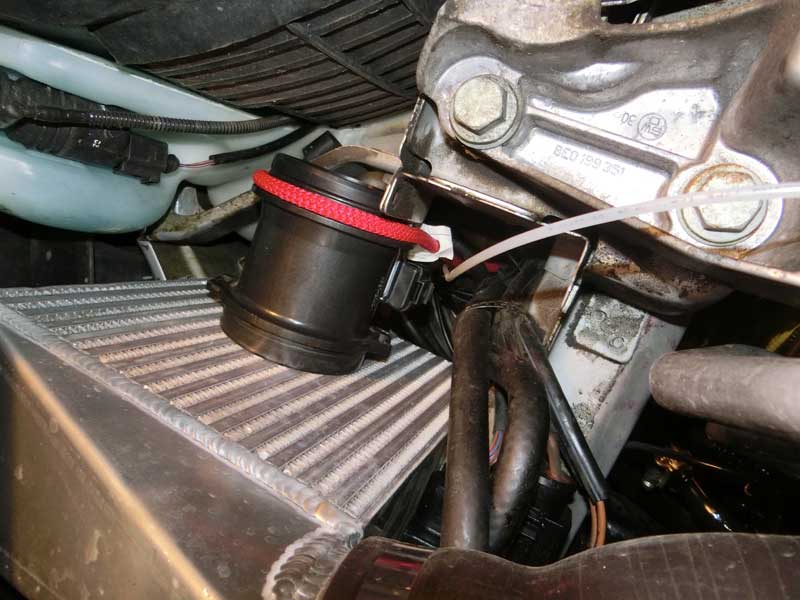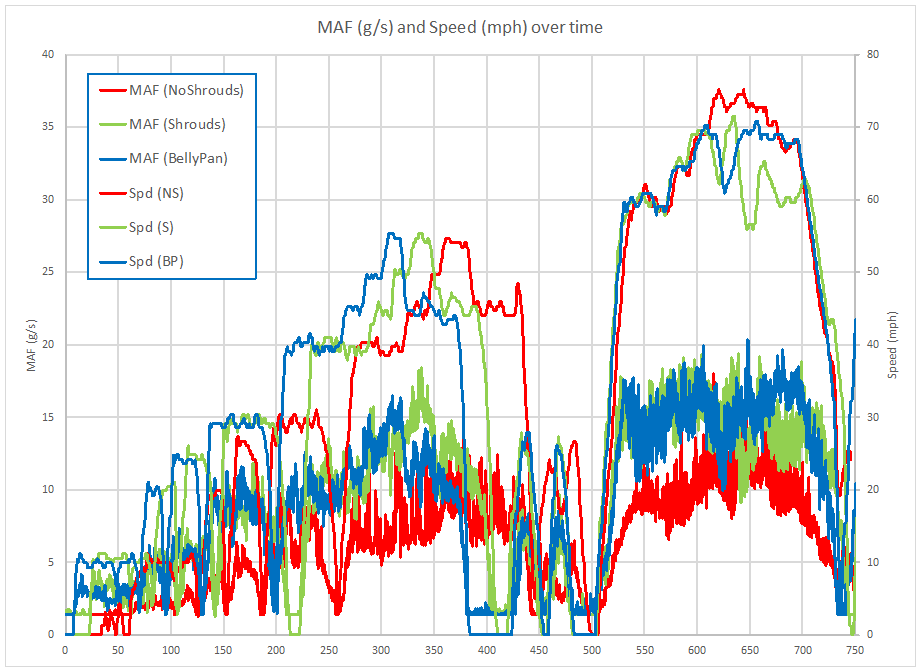Through the process of recording Intake Air Temperature (IAT) I have pretty well beat this subject to death, not finding much, if any, benefit to the charge air temperatures by having shrouds in place on the intercoolers that I have used in the past.
These results have been counter intuitive, so much so that I continue to purchase shrouds with my intercoolers even though I haven’t found them to improve the performance of the intercoolers.
To try and better understand why the shrouds don’t seem to be beneficial I decided to look at assessing the problem in a different way. I thought that if I could place a MAF sensor housing flush against the back side of the intercooler core I should be able to record the mass airflow through the core under a variety of conditions.
Since I have tried checking the MAF voltages on the flow bench in the past I was close to having a setup that I could transfer onto the car with little difficulty. Mounting the MAF housing to the back of the core was one concern that I thought could prove frustrating to try and accomplish. I discovered during test fitting, to see if the MAF would even fit behind the core, that a couple of the cars interior braces would allow me to wedge the MAF housing in place and it would be flush against the core, good news. All I needed to do was figure out how to hold the MAF housing in place. After checking a couple of different length bungee cords I found a good length and wrapped it around the MAF housing. A nice snug fit and the housing was firmly locked in place.

Next I set out to record the MAF voltages under different driving conditions with different parts on the car.
The first test case was without shrouds on the intercoolers. I also left the belly pan off for this drive. The route I took had me driving at 10 mph and then 20 mph through my neighborhood. Out onto a street where I drove 25 mph then 30 mph. Onto another street where I could drive 40, 45, 50, and 55 mph. The onto a highway where I drove 60, 65, 70, and briefly on one drive 75 mph.
This drive was repeated with a stock shroud in front of the IC core. I chose the stock shroud because the shroud supplied with the SRM IC fit’s very poorly and has a large gap along one side of the IC core. The stock shroud has a good fit and the air is funneled into a region of the IC core that the MAF housing sits behind.
The final configuration that I recorded today was with the addition of the belly pan to the shrouded IC.

On the chart above the Red lines are the “No shrouds” drive. The Green lines are with “Shrouds” but no “Belly Pan”. The blue lines are for the case with both the “Shrouds” and “Belly Pan” installed.
Upon first glance it looks like adding the shrouds did improve the mass flow rate through the IC core. It also looks like the belly pan did not have much of an affect on the flow through the core.
I need to further analyze the data so that the speed versus time differences are eliminated and I can compare flow rates at like speeds.
A final test case I plan to evaluate will be with the IC shroud removed, but under belly pan in place.
Conclusion:
While this more direct measurement of airflow through the core showed differences with and without the shroud in place, I am unsure if the differences are significant enough to cause a meaningful change in the charge air temperature exiting the IC core.
Lastly, here is a FATS pull without shrouds installed.

